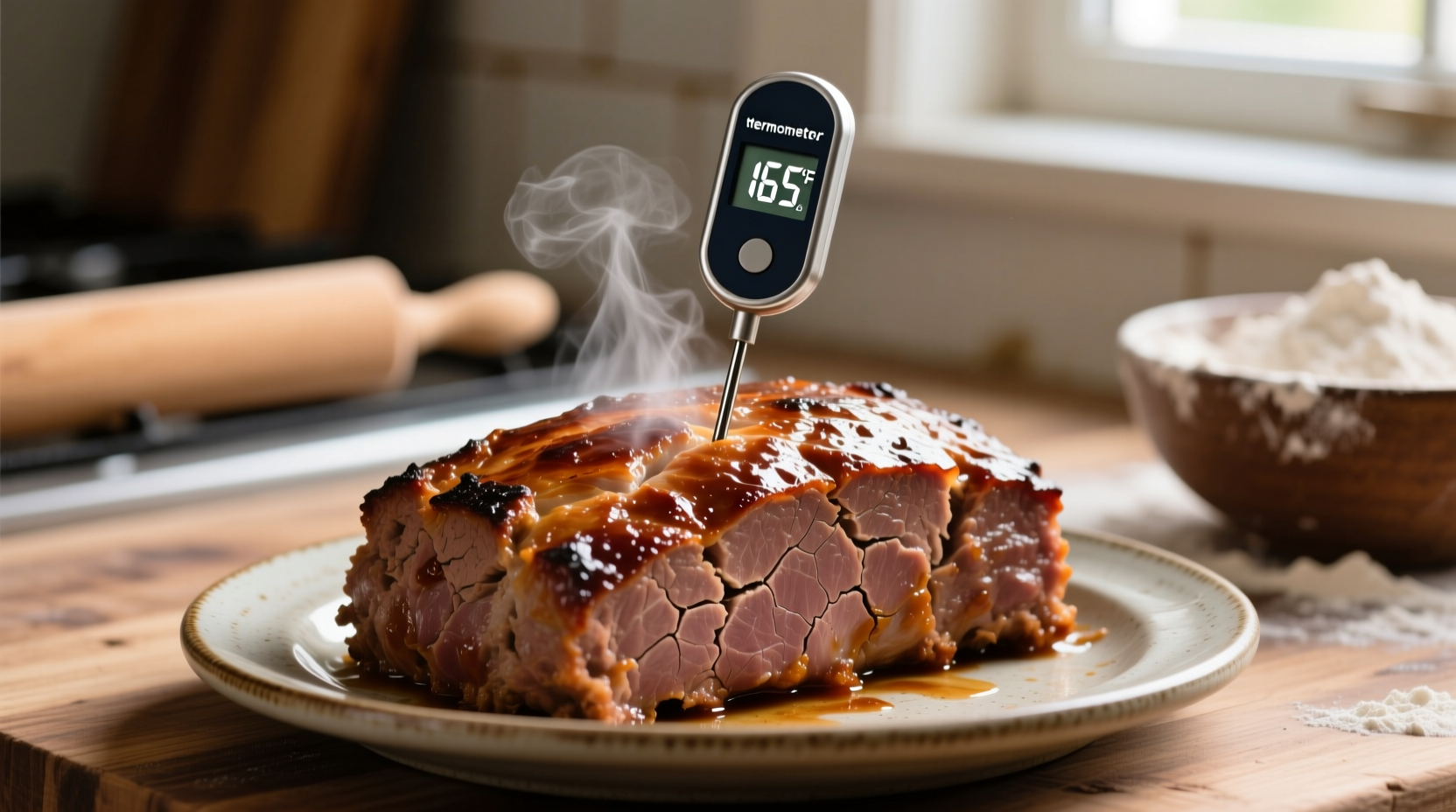Nothing ruins a comforting meatloaf dinner faster than undercooked centers or dry, overcooked edges. Getting the timing right for your 2-pound creation is crucial for both food safety and texture perfection. After decades of perfecting this American classic, I've discovered the precise balance that delivers juicy, flavorful results every time.
Why Timing Varies for Your 2-Pound Meatloaf
Your oven's actual temperature, the loaf pan's material, and even your meat mixture's composition affect cooking duration. That's why professional kitchens never rely solely on time. The USDA Food Safety and Inspection Service confirms ground meats must reach 160°F internally to eliminate harmful bacteria like E. coli (foodsafety.gov).
| Meatloaf Weight | Oven Temperature | Approximate Time | Internal Temp |
|---|---|---|---|
| 1.5 lbs | 375°F | 30-35 minutes | 160°F |
| 2 lbs | 375°F | 35-45 minutes | 160°F |
| 2.5 lbs | 375°F | 45-55 minutes | 160°F |
The Foolproof Cooking Process
Preparation Matters Most
Chilled ingredients prolong cooking time. Bring your meat mixture to room temperature for 15 minutes before baking. Use a standard 9x5-inch loaf pan for optimal heat distribution - glass or ceramic requires 5-10 extra minutes. For better browning, try the America's Test Kitchen technique of lining the pan with parchment paper.
Perfect Oven Conditions
Preheat to 375°F - not 350°F as many outdated recipes suggest. Higher heat creates a flavorful crust while keeping interiors moist. Position the rack in the center for even airflow. Avoid opening the oven during the first 25 minutes to maintain consistent temperature.

Timing Your 2-Pound Loaf
Start checking at 35 minutes. Insert an instant-read thermometer into the center:
- 150°F: Continue cooking (about 5 more minutes)
- 155°F: Nearly done (check again in 3 minutes)
- 160°F: Perfect! Remove immediately
Remember that carryover cooking will raise the temperature 5°F during resting. The University of Minnesota Extension confirms this residual heat continues cooking meat for 10-15 minutes after removal from oven (extension.umn.edu).
Visual Doneness Indicators
While thermometers are essential, these visual cues confirm proper cooking:
- Clear juices running from the center (not pink)
- Firm but springy texture when pressed
- Deep brown crust formation
- Meat pulling slightly away from pan edges
Avoid These Common Mistakes
Overmixing: Creates dense texture - combine ingredients just until uniform. Wrong binder ratio: Too many breadcrumbs cause dryness; maintain 1 part breadcrumbs to 2 parts meat. Skipping the rest: Cutting too soon releases precious juices - wait 10 minutes before slicing.
Food safety researcher Dr. Catherine Strohbehn notes that 38% of home cooks don't verify meat temperatures properly, leading to potential foodborne illness risks (foodsafetynews.com). Always prioritize thermometer verification over timing estimates.
Temperature Troubleshooting Guide
If your meatloaf isn't reaching 160°F within expected time:
- Oven running cool? Calibrate with a separate oven thermometer
- Mixture too cold? Let ingredients warm slightly before mixing
- Pan too large? Use proper 9x5-inch dimensions for heat concentration
- Altitude effects? Add 5 minutes per 3,000 feet above sea level











 浙公网安备
33010002000092号
浙公网安备
33010002000092号 浙B2-20120091-4
浙B2-20120091-4